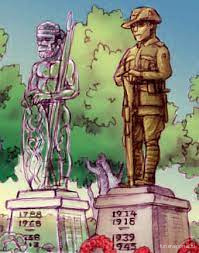#How many war memorials exist in Australia?
There is no centralised register of war memorials for Australia, but historian Ken Inglis and his research assistant Jan Brazier estimated in 1997 that there were 4,000 - 5,000 memorials in Australia [1], a figure that is likely to be much higher today.
In 2014 the Register of War Memorials in NSW counted 2,334 memorials, the Queensland War Memorial Register listed 1,393 entries [2].
There is no official database of Aboriginal war memorials either. In fact, many Australians don't even know that there are memorials of Aboriginal people serving in wars.
"We want our own memorial to the frontier wars and the other wars," says Ray Jackson, president of the Indigenous Social Justice Association [3]. "It is our history and our wars. there must be no watering down or white-washing of that history by governments... There is too much bad history of sublimating our black and white invasion history to trust that task to governments.
"We must have our own war memorial in our own agreed place. a place that is not shamefully hidden up a dirt track behind the national war memorial."
No official attempt has ever been made to find, mark and commemorate the sites where Aborigines were shot down by settlers, soldiers and police. — Henry Reynolds, author [4]
If Germany can deal with their horror history and establish memorial sites, so too can Australia. Australia has to deal with its true history, as it is only through this effort that this nation can begin to heal. — Michael Anderson, Aboriginal leader [5]
Map showing the approximate locations of Aboriginal war memorials in Australia.
#Australian Capital Territory
Aboriginal war memorial plaque, Canberra
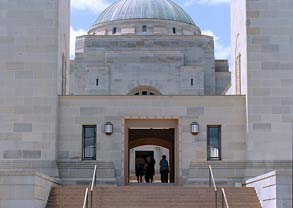
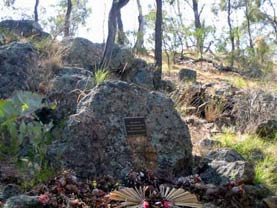
There is an Aboriginal war memorial plaque in Canberra, ACT, set up not by the Australian government but by private citizens. It is not in the spotlight and not easy to find. You can find the Aboriginal war memorial plaque in the vicinity of the Australian War Memorial, a ten-minute walk away.
Michael Southwell-Keely describes how to get there: "From the cairn marking the end of the Remembrance Driveway take the path that leads up Mount Ainslie. Cross bridge and go through walkers gate to the junction of two tracks. Take the left metalled track signposted Mt Ainslie Walking Trail. After 100 metres the track goes through two walkers gates and crosses a gravel road. Continue on the track for about 50 metres from the second gate to sign marked Aboriginal Plaque 70 metres. Take the narrow track on the left until you come to a group of boulders." [6]
FactThe War Memorial has for about 30 years declined to accept that “Australian military history” includes the conflicts with Aboriginal people that occurred all over Australia for over a century.
Elia Ware Crescent, in Canberra's suburb of Bonner, has been named after an Aboriginal digger who served in the Torres Strait Light Infantry Battalion during the Second World War.
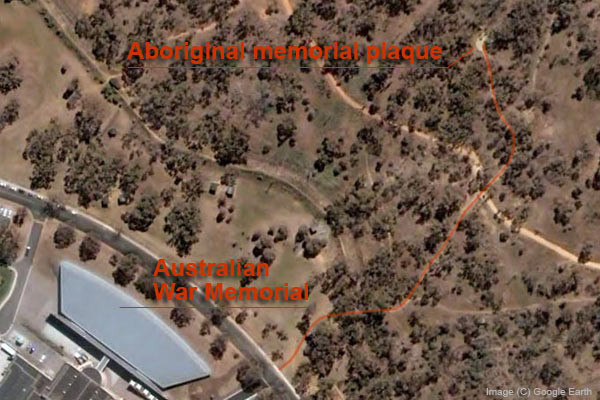
#New South Wales
Australian Indigenous war veterans memorial, Toomelah
On February 20th, 2009 what is claimed to be the 'first memorial dedicated to Australian Indigenous war veterans' in an Aboriginal community was unveiled in Toomelah, New South Wales, about 180kms south-west of Brisbane [7].
The memorial features a plaque listing the names of 21 Toomelah and district Aboriginal veterans who served in both world wars and the Vietnam war.
Indigenous servicemen plaque, Moree
22 former Indigenous servicemen are recognised with a special plaque at Moree cemetery. A local researcher and historian, Noeline Briggs-Smith, spent many years compiling a detailed history and ensured all servicemen buried at Moree received a proper headstone [8].
War memorial sculpture, Bondi Beach
A plaque cites words by Aboriginal Captain Reginald Saunders, the first Aboriginal commissioned officer, who fought at the Battle of Kapyong, Korea, in 1951: On Anzac eve we dug in among friends. At last I felt like an Anzac, and imagine there were 600 other like me.
The site is located at Scarborough Crescent, adjacent to North Bondi RSL. It was officially opened in a formal ceremony held on Sunday 27 November 2011.
Saunders was born on the Framingham Aboriginal Reserve, in Victoria, on 7 August 1920. Aged 20 he enlisted as a soldier, leaving the army in 1954. Before his death in 1990 he worked as a liaison officer [9].
There aren't that many war memorials that we are aware of that are devoted to Indigenous memorials.
— Norbert Keough, honorary secretary of the North Bondi Sub-Branch, RSL of Australia [10]
Memorial plaque, Rhodes
On the Kokoda Track Memorial Walkway in Rhodes (a suburb of Sydney) you find a memorial plaque commemorating Aboriginal Servicemen who fought in the Battle of Kokoda. The plaque was unveiled on November 3, 2012.
WWI memorial, Callan Park, Lilyfield
Douglas Grant (1885?-1951) was an Aboriginal soldier of World War I and worked as a clerk at the Callan Park Mental Asylum where he lived. In his spare time he constructed a large ornamental pond spanned by a replica of the Sydney Harbour Bridge. The structure served as a war memorial and was unveiled on 5 August 1931.
You can find the memorial at the southern end of the Callan Park main oval.
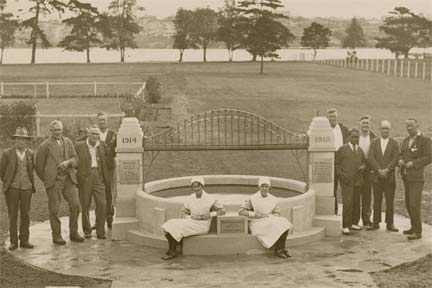
Yininmadyemi - Thou didst let fall, Hyde Park South, Sydney
Opened in April 2015 and probably the first state war memorial for Aboriginal soldiers in NSW, the memorial by Aboriginal artist Tony Albert is composed of four standing bullets and 3 fallen shells. The bullet is a universal signifier for conflict. The arrangement of the bullets, with some standing and some fallen, represents those who survived and those who were sacrificed, but also the different treatment after the war [12]: while the white Australian comrades were given land for their service, Aboriginal soldiers received nothing and some returned to find their children had been taken away.
Lord Mayer Clover Moore said, "This very public memorial in Hyde Park South will be seen by visitors from across Australia and around the world. It will be a lasting reminder of the contribution Aboriginal and Torres Strait Islander peoples make – and continue to make – to Australia’s protection." [13]
Co-founder of the Coloured Digger project that lobbied for a memorial in Sydney, Pastor Ray Minniecon, said, "We must also remember what happened to them when they came back and that it’s not glossed over: they struggled overseas fighting bullets, then came back to Australia and had to fight racism." [13]
Hyde Park South was chosen because it was once a ritual contest ground, a crossroads for traditional walking trails, and an important site for ceremony, gathering and camping [12]. It is also home to the ANZAC Memorial.
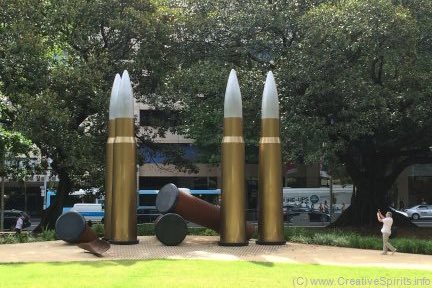
#Northern Territory
Aboriginal soldier memorial, Yirrkala
Another memorial for Aboriginal soldiers is in Yirrkala, Northern Territory, to commemorate the Yolngu men who served in northern Australia during World War II.
#Queensland
Rock inscription, Burleigh Heads
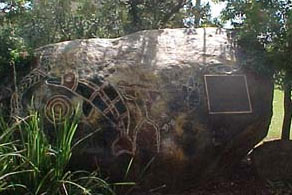
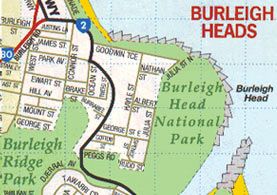
In Burleigh Head National Park (Gold Coast, Queensland) there is an ancient bora ring (sacred initiation ground) with a large rock. The rock features tribal totem paintings and an inscription.
The Burleigh Heads Aboriginal rock inscription reads:
"This rock is placed here to honour Yugambeh men and women who served in defence of this country. Yugambeh is the linguistic name of the Aboriginal people whose tribal region extends inland from the Logan and Nerang rivers and includes the areas covered by all the adjacent streams and creeks. Yugambeh family groups include Kombumerri, Wangeribubba, Migunburri, Munajahli, Gugigin, Birinburra and others. We honour those who served in the armed forces and those who made the supreme sacrifice. The symbolism of this rock serves to highlight the role played by Indigenous Australians in defence of this country."
The war memorial was erected by the Komburri Aboriginal Corporation for Culture with support and assistance from the Gold Coast City Council on April 21, 1991.
#South Australia
Aboriginal servicemen memorial, Adelaide
South Australia unveiled a memorial to honour Aboriginal and Torres Strait Islander servicemen and women in Adelaide on 10 November 2013.
The project was driven by a veterans Aboriginal and Torres Strait Islander War Memorial committee and the memorial was the first to specifically commemorate Aboriginal servicemen and women [14].
The circular memorial features two statues of Aboriginal service personnel, one male, the other female, and a central coolamon. There is a Rainbow Serpent in its slate base and a boulder to symbolise Aboriginal creation stories. It is located off the Torres Parade Ground in Adelaide.
#Tasmania
Aboriginal memorial plaque, Launceston
The second Anzac memorial for Indigenous people is in Kings Park, Launceston, Tasmania. The memorial plaque carries the Rising Sun and Tri Services Badge emblems and reads: "Proudly dedicated in recognition of the Tasmanian Aborigines who served or fell in the defence of their country 1901 - 1999" [15].
#Victoria
Standing by Tunnerminnerwait and Maulboyheenner, Melbourne
This is Melbourne's first war memorial to Aboriginal people's clashes with colonists. It's a monument to Tunnerminnerwait and Maulboyheenner, two Aboriginal men executed in 1842. It features brightly coloured newspaper vending boxes (a symbol for telling stories of frontier wars), a child's swing (doubling as a gallows) with astone bench below (representing reflection, a tomb, and the weight of history) and an Aboriginal garden. [16]
The site, situated on a small reserve at the intersection of Victoria and Franklin Streets, is near where the men were hung for two murders, the first public hanging in the colony.
Opened in September 2016, this is considered the first memorial for frontier wars.
Aboriginal War Memorial Plaque, Warrnambool
An Aboriginal War Memorial Plaque honouring Aboriginal service personnel from south-western Victoria was unveiled on November 1st, 2010, on Cannon Hill in Warrnambool [17]. It is estimated more than 80 Indigenous veterans had served since World War I.
The Aboriginal contribution has been a missing voice from the Australian military legend and psyche for many decades.
— Marcus Clarke, Gunditjmara Aboriginal Co-operative [17]
#Western Australia
Aboriginal memorial, East Victoria Park
A RSL Aboriginal memorial can be found on Fred Bell Parade in East Victoria Park, near Perth, WA. It's a black granite rock with a memorial nameplate and flagpole flying the Aboriginal flag. It reads:
"In memory of the Aboriginal service men and women of the Victoria Park District who served their country in its hours of need. In doing so they helped to build a Nation. Dedicated 3 February 2002."
Memorial wall at Karrakatta Cemetery, Karrakatta
Located in Karrakatta, west of Perth, the memorial wall commemorates Aboriginal servicemen killed in conflict and buried overseas during World Wars I and II.
The memorial wall was unveiled in January 2012 and is located in the Aboriginal and Torres Strait Islander Keeping Place at Karrakatta Cemetery. The Keeping Place is a purpose-designed building holding the skeletal remains of Aboriginal people previously stored in museums around the State and the country [18].
